The world’s oldest living hereditary monarchy is the Imperial Emperor of Japan. Although today the emperor is more of an administrative head, the Japanese still hold the status of this office in high regard. And the Chrysanthemum is a symbol of that tradition, found throughout historic relics, fabrics, and other art.
How the Chrysanthemum became the seal of the Emperor of Japan is a long and interesting story.
Coming from their Chinese counterparts, the Japanese immediately embraced the introduction of this aromatic flower. To this day, it still has deep and synonymous connections to the Imperial Family.
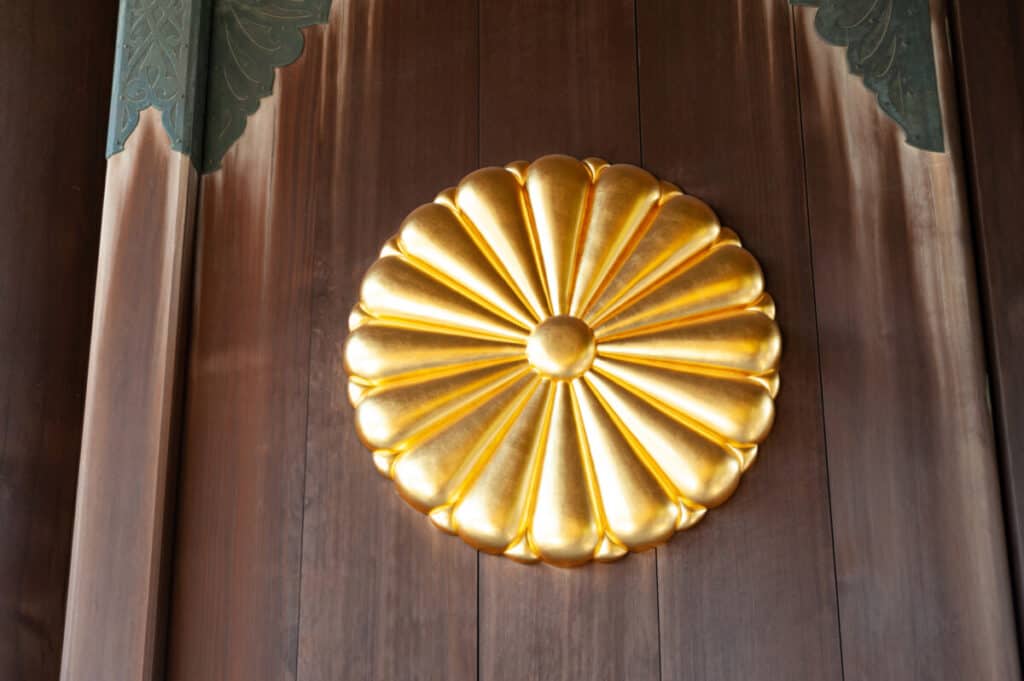
About Chrysanthemums Within Japan
Chrysanthemums are beautiful flowers from the Asteraceae family, also known as the aster family. These are herbaceous perennials and subshrubs (dwarf shrub) with alternate leaves that have smooth or toothed margins.
A compound inflorescence, they have an arrangement of several flower heads on one flower to look like one solitary head.
They are often in colors like white, yellow, and red but there are hybrids of many colors that include pink, purple, and orange.
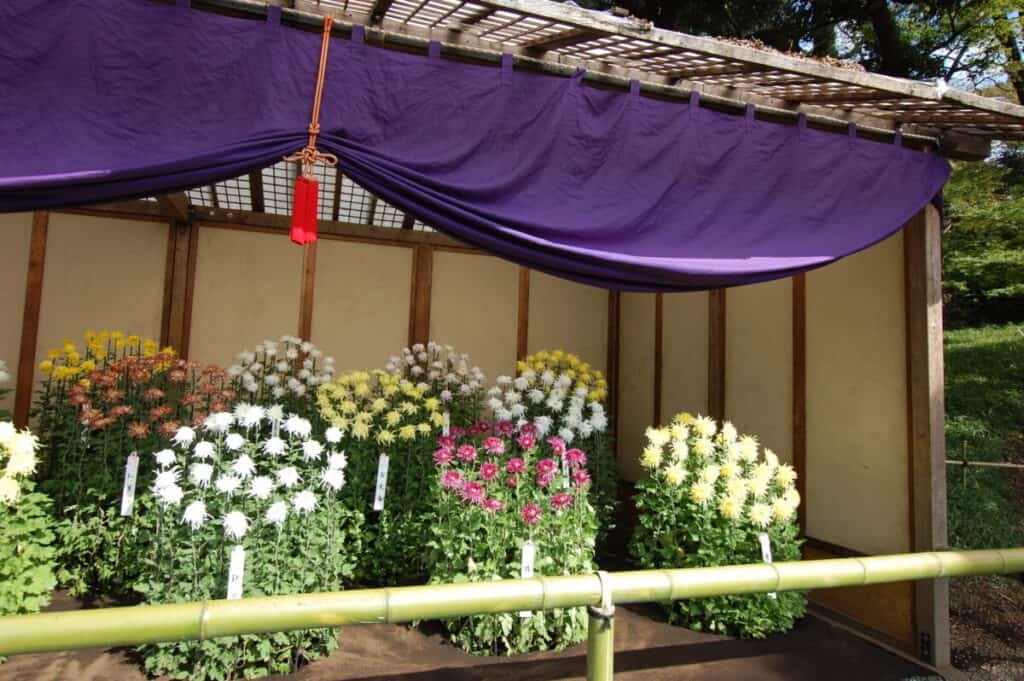
These are autumn flowers with many cultures featuring them in November when they are most beautiful. But, in Japan, it’s the flower of September.
Our word, Chrysanthemum, comes from the Greek word that means “gold flower.” But, the Japanese call it Kiku (菊). Not only does this refer to Chrysanthemum as a noun, but it’s also the same word used to describe the first line in a poem. But, it’s also a verb that can mean “to ask,” “to listen,” “to hear,” “to act” or “to work.”
A History of Japan’s Chrysanthemums
While this gorgeous and fragrant flower has worldwide fame, the largest diversity is in China. As a matter of fact, China introduced the Chrysanthemum to the Japanese in the early 8th century, during the Nara Period.
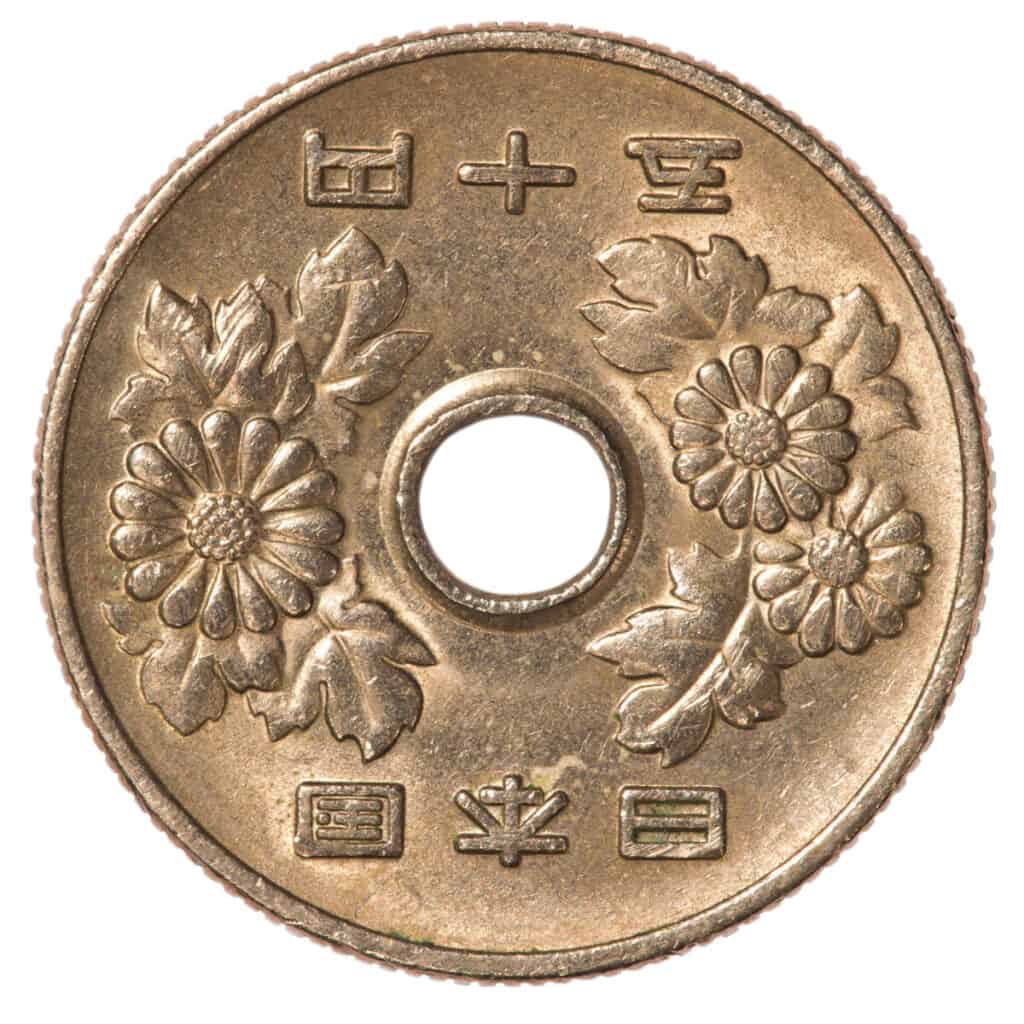
By the Edo Period, the early 17th to late 19th centuries, its popularity was widespread among the Japanese, particularly the nobility and the royal family.
The Japanese took the Chrysanthemum to a whole new level. They developed a culture of growing and shaping that flourished and continues to this day. They exported these new cultivars back to China, which changed the way even the Chinese chose to cultivate them.
Then, during the Meiji Restoration (late 19th to early 20th centuries), the Japanese developed the Ogiku or Great Chrysanthemum. This has a flower head nearly eight inches around (20 centimeters).
Imperial Family Adoption of the Chrysanthemum
These flowers were so impressive that the Japanese royal family adopted them as their official symbol. This is evident in the notorious Chrysanthemum Throne and the Imperial Seal of Japan. Both of which are still in use today.
They use it on government seals to represent the Chrysanthemum Throne. You can also see it on several official Japanese state business documents and it’s the symbol of the highest honor a citizen can receive, the Supreme Order of the Chrysanthemum.
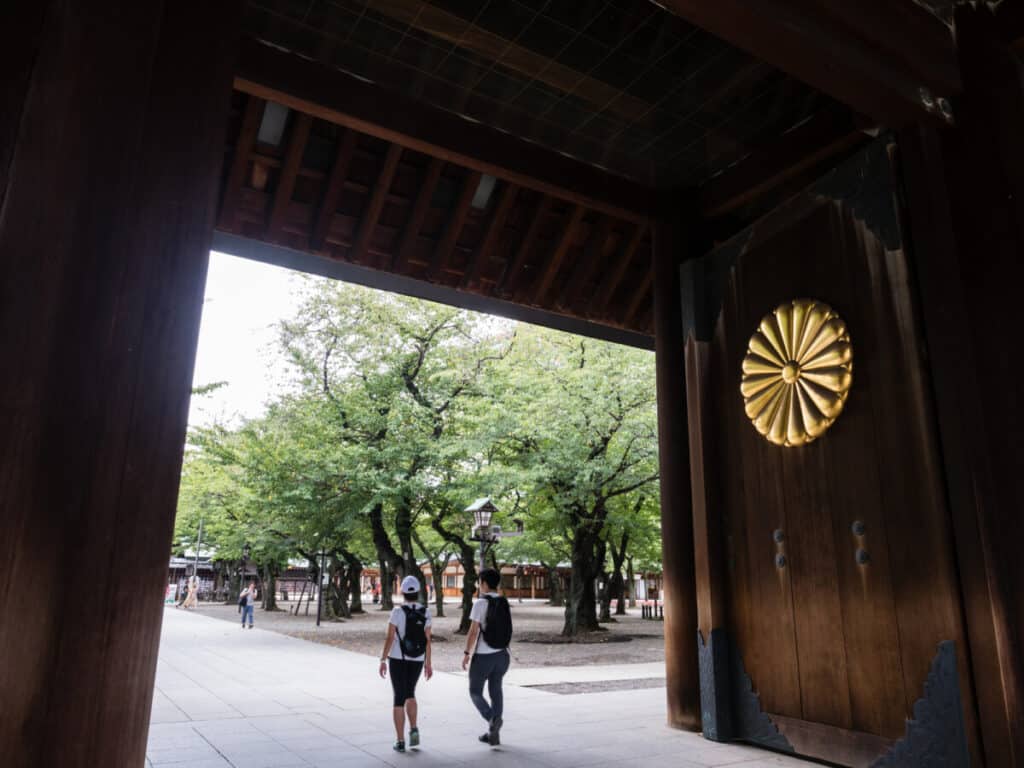
The Chrysanthemum Throne
The Imperial Seat, or Chrysanthemum Throne (皇位), called kōi, is the official throne of the Emperor of Japan. It refers to a specific seat that’s highly lacquered and decorated with the Imperial Seal of the Chrysanthemum.
Also, it’s a rhetorical metaphor for the official role of the emperor as well as for the goings-on of the Japanese monarchy itself.
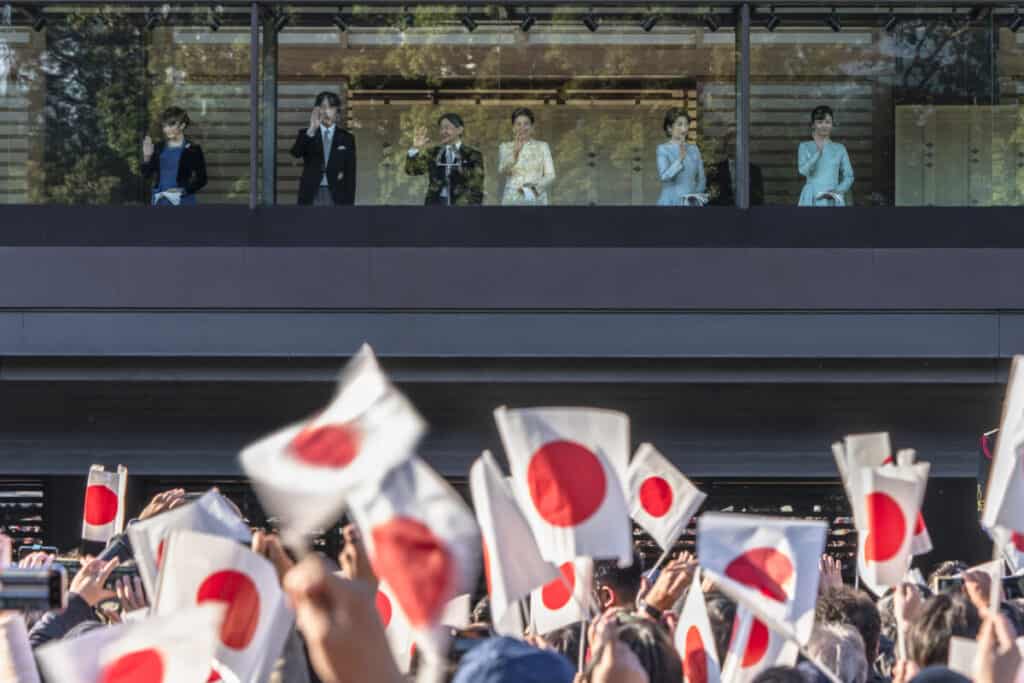
Even though legend dictates the monarchy came into being around 660 BC by Emperor Jinmu, the Chrysanthemum didn’t become part of the imperial family until its introduction by China in the early 8th century AD.
It was at this time the Emperor Shōmu ordered the building of the actual Chrysanthemum Throne.
The Chrysanthemum Throne after WWII
Under Japan’s current Constitution, drawn up after World War II, the Emperor became a ceremonial symbol of the State.
But the Chrysanthemum Throne is now a metonym, a rhetorical trope to refer to the Emperor, his actions, and other such business.
For instance, it can refer to the mystic process of transferring imperial authority, when one emperor hands down the reign to his heir.
It can be a way to refer to the Emperor himself or it can be a subtle suggestion for the actions of the Emperor.
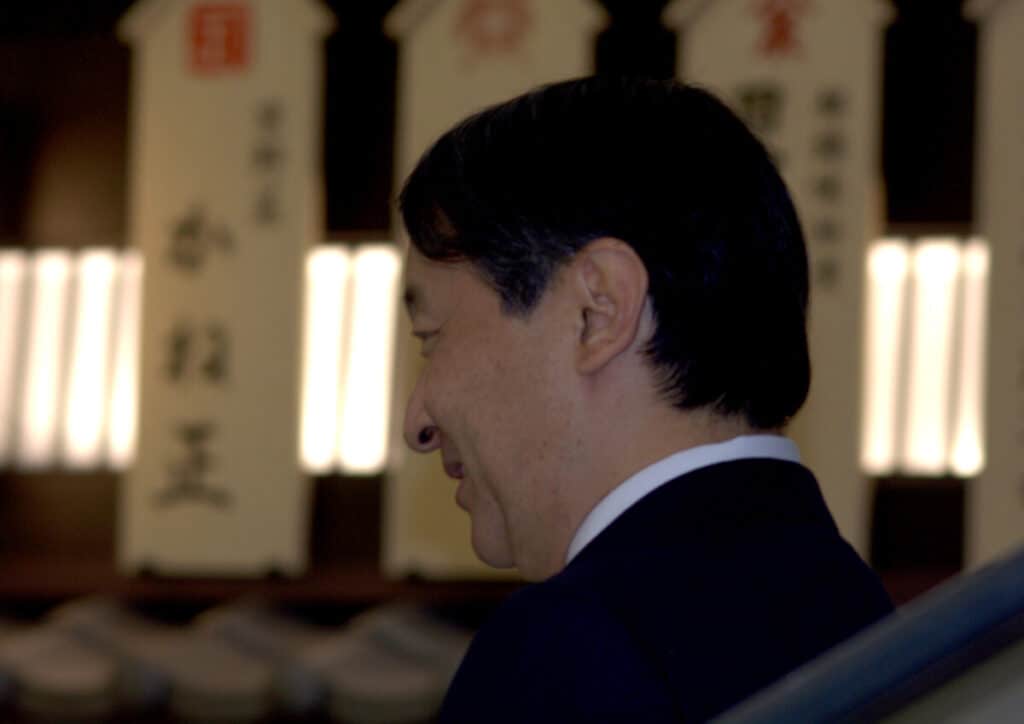
Today, Naruhito is the Emperor of Japan and is the 126th monarch to occupy the Chrysanthemum Throne.
He very much sports this symbol and utilizes it to denote his presence or approval as well as for other modes of official Imperial business.
The Imperial Seal
The Imperial Seal of Japan goes by many names:
- Chrysanthemum Seal, “kikumon” (菊紋)
- Chrysanthemum Flower Seal, “kikukamon” (菊花紋) or “kikukamonshō” (菊花紋章)
- Imperial Chrysanthemum Emblem, “kikunogomon” (菊の御紋)
The Imperial Seal depicts a symbolic representation of a Chrysanthemum. It’s a central disc with a total of 32 petals that surrounds the space. 16 petals are visible in the front with another 16 petals behind and between the frontal petals.
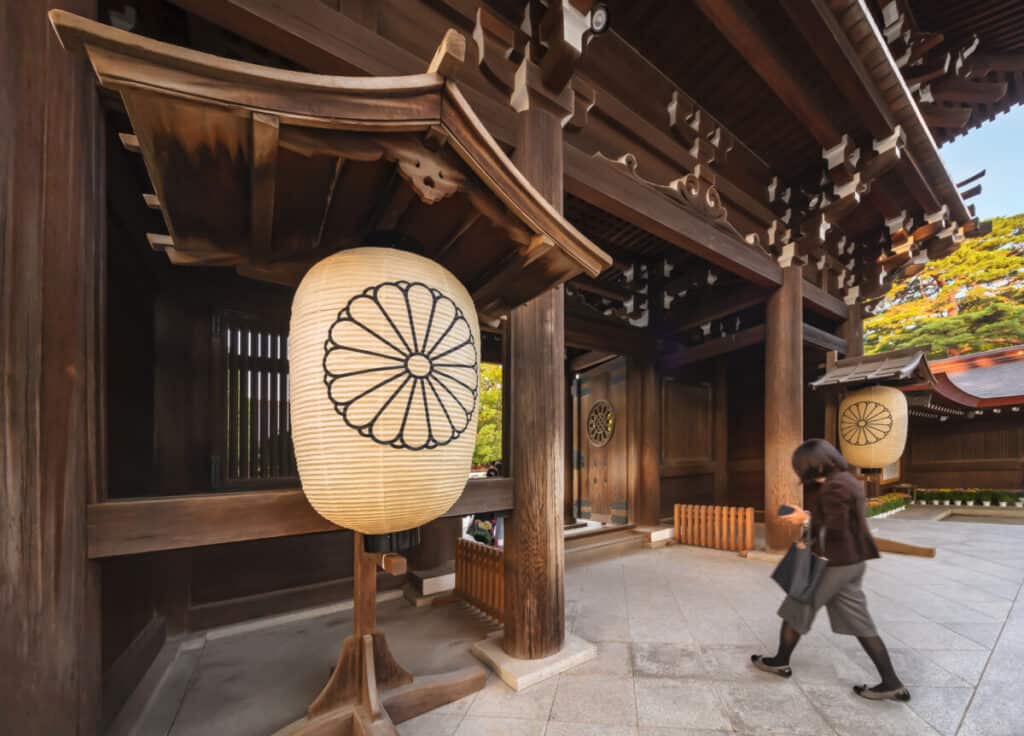
It’s often yellow or orange with red or black outlines. While the background changes between various emperors, the layout is the same.
However, the current Imperial Seal has a yellow Chrysanthemum in the center with a red background, which is fairly traditional. Everyone in the Imperial Family uses it for flags, seals, and crests.
Imperial Variations And Alterations
But, during the Meiji Restoration, no one could use this Imperial Seal, except for the Emperor of Japan. Therefore, while the Imperial Family would use the symbol, they had their own variations in their presentation of the petals.
For instance, when Emperor Go-Daigo tried to crush shogun power in 1333, he created a seal with 17 petals to set himself apart from Emperor Kōgon of the Northern Court.
Others members of the Imperial Family used one with 14 petals or had the symbol set within a bird.
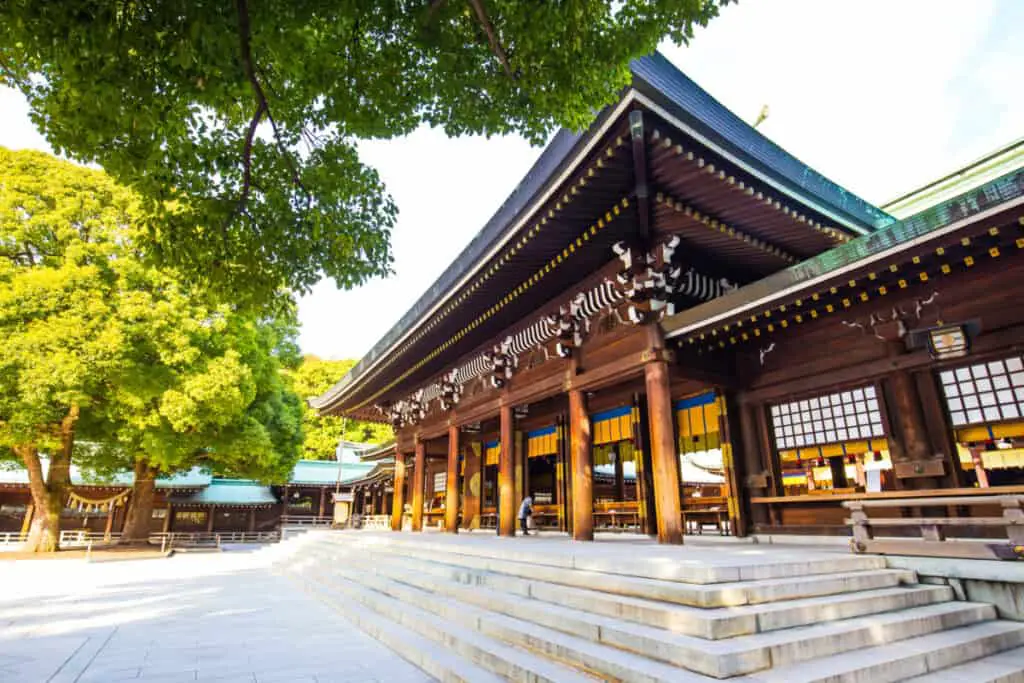
Chrysanthemums in Modern Japanese Culture
In Japan, the main colors they revere are white and red. White being the symbol of mourning and funerary rites while red is indicative of love, similar to what the West considers roses.
However, during autumnal celebrations, the Japanese honor all colors that Chrysanthemums exist.
Coins, Passports And Fabrics
Today, they use the symbol of the Chrysanthemum on passports, fabrics, coins, and awards. For instance, you can see it on the 50 yen coin (worth about $0.50). Therefore, to the Japanese, the Chrysanthemum is a symbol of longevity, rejuvenation, and, especially, royalty.
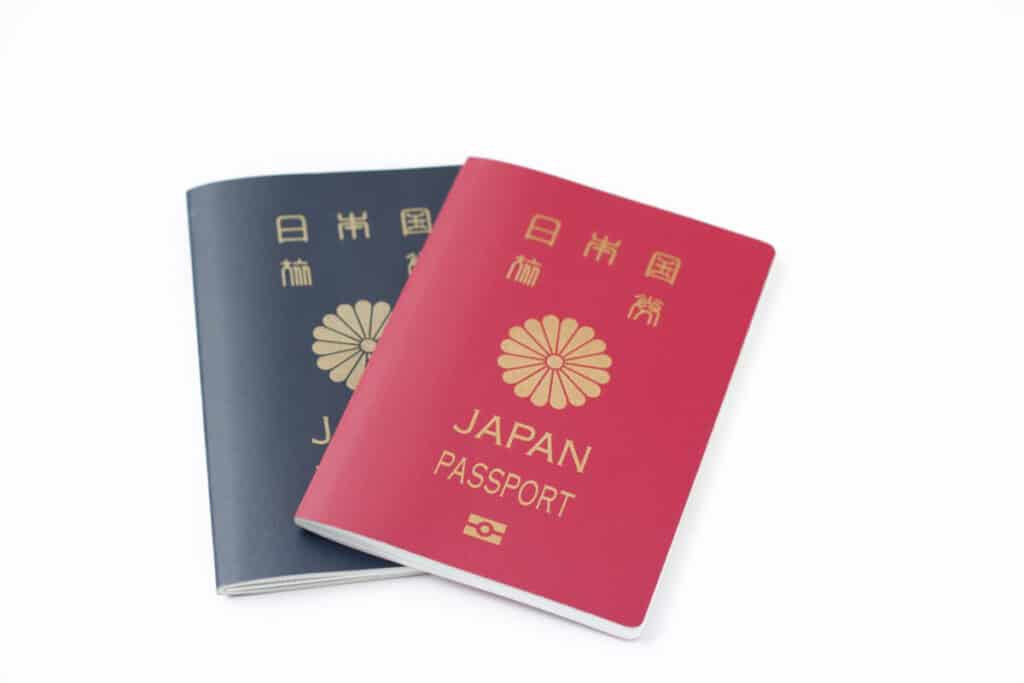
Chrysanthemum Day
What’s more, there are a number of shows and festivals throughout the country. For instance, Kiku no Sekku, or Chrysanthemum Day (菊の節句), is one of the five ancient sacred festivals. Started in 910 by the imperial court, it’s celebrated on the ninth day of September (the ninth month).
Chrysanthemums Big And Small
You can find huge Chrysanthemum gardens throughout Japan and there are even bonsais, tiny potted plants, of Chrysanthemums.
There are flowers that are tall and huge, with bulbous blooms flowing forth and tiny bonsai blooms, no bigger than the nail on your thumb.
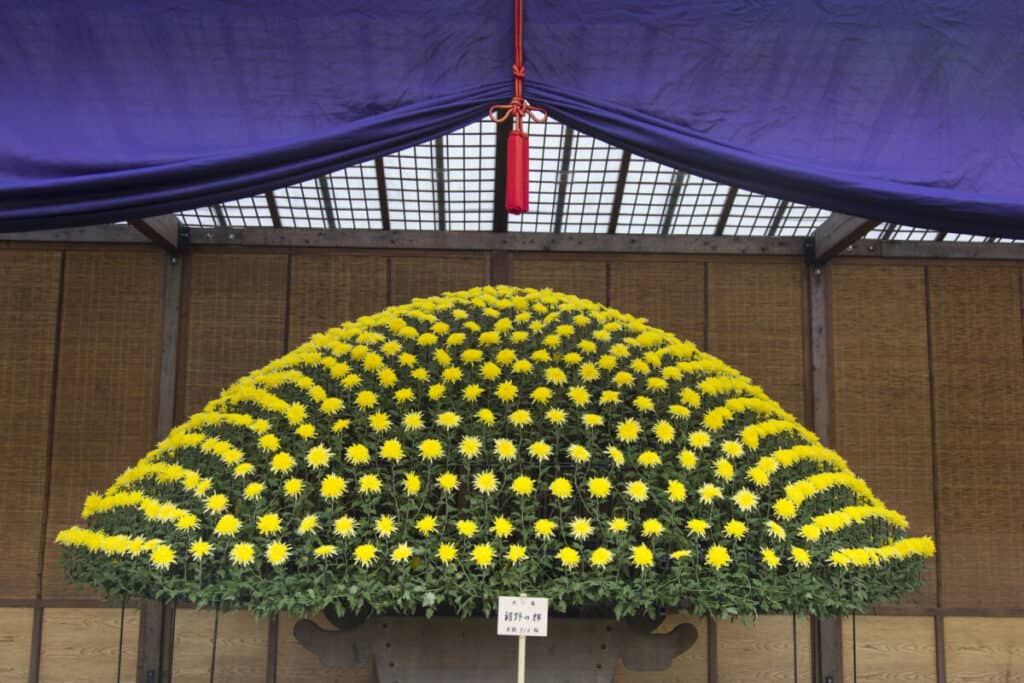
Imperial Chrysanthemums And Japanese Numerology
Up until World War II, people considered the Imperial Emperor of Japan to be a divine spirit, or kami, related to the gods.
Shinto tradition says that all royal descendants share a blood relationship with the great Sun Goddess, Amaterasu no mi Kami.
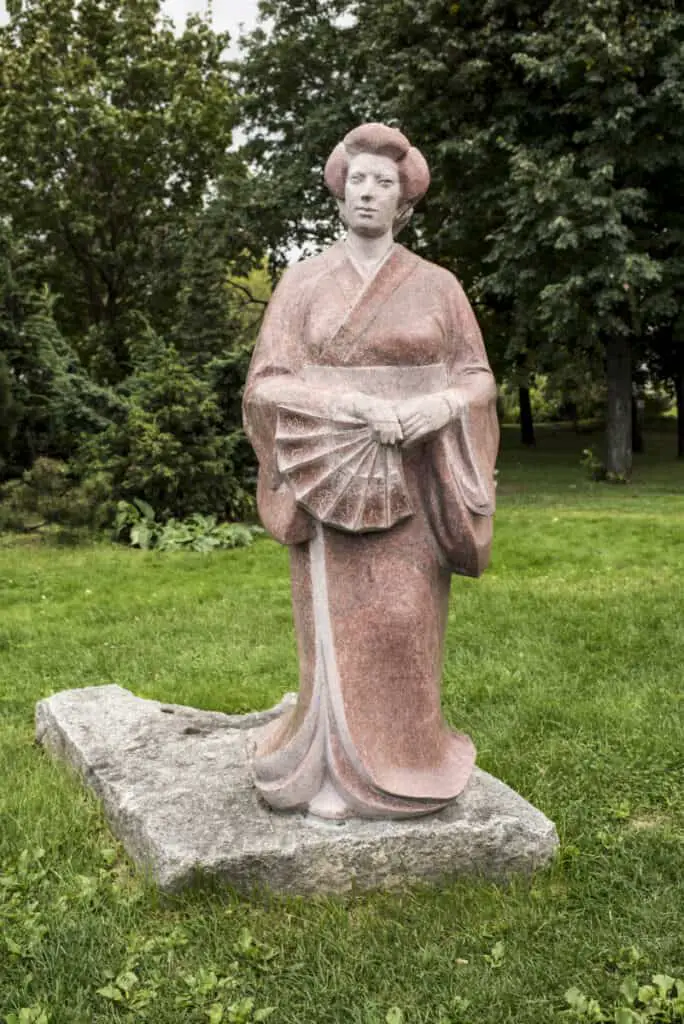
The Lucky Number 7
Using 16 petals twice on the Imperial Seal denotes this connection to the gods. When you add the one and six, you get seven. In Japanese superstition, seven is an incredibly lucky and fortunate number as it relates to the Seven Great Gods of Japan, with Amaterasu being one of them.
The Lucky Number 5
What fortifies this symbolism is the additional set of 16 petals behind the foreground petals. This makes 32 petals in all. When you add the three and the two, you get five which is another lucky number in Japanese belief.
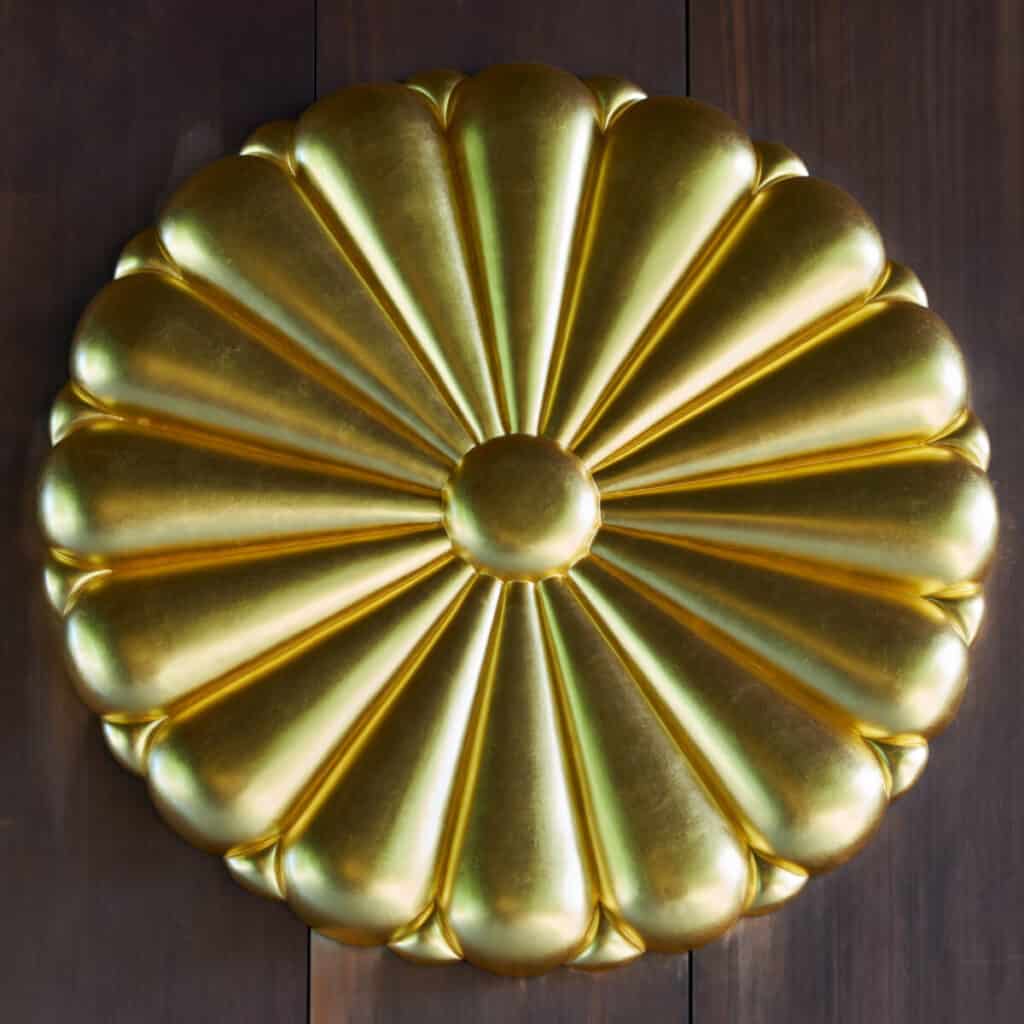
This harkens back to the natural science and cosmological system developed in the 5th and 6th centuries called “onmyodo,” (陰陽道).
These are the discovery, use, and understanding of the five basic elements of the earth and within every living creature upon the earth: fire, earth, wood, water, and metal.
Therefore, the number five came to represent these elements. These project the concept and ideas of peace and perfect balance. Depicting both numbers on an Imperial Seal would give support and credibility to the authority of the Emperor.











